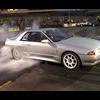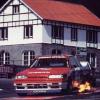Nm35 - Problems With Engine Starting
Announcements
-
Similar Content
-
Latest Posts
-
Sports car sales are minuscule. CUVs are where the sales are, and every manufacturer including Ferrari are catering for those buyers. Sadly. Can't even get a wagon for less than $50k.
-
The door and bonnet gaps look very tight for such cheap models 👍
-
I haven’t taken them out of the cases yet inside the box is this packaging which is pretty much like a massive blister pack
-
Purchased a NC MX5 a while ago Basic suspension mods done, BC coils and Whiteline sway bars New DBA calipers, discs and pads Added some 17 x 8 Konig Decagrams with 215/45 17 PS5's Added some typical NA bolt on's, i.e. full exhaust and intake Added 0.5ltrs with a MZR2.5 swap, nice bump in torques Found a detachable hard top which is locked in for a colour match with my local paint shop in Feb 25, this also includes some PDR as it has received a few love taps from parking in the local shops when in the hands of my Minister for War and Finances, me, I park nowhere near other cars and typically park on the street The little thing is awesome, I drive it everywhere, it handles like a dream whether I'm up it or just cruising But now, because I'm a idiot, I keep looking at turbo kits....... did I mention I'm a idiot Why is dose so appealing All of the NA 2.5 glory, well.......until sometime in 2025 anyway....🤪








Recommended Posts
Create an account or sign in to comment
You need to be a member in order to leave a comment
Create an account
Sign up for a new account in our community. It's easy!
Register a new accountSign in
Already have an account? Sign in here.
Sign In Now